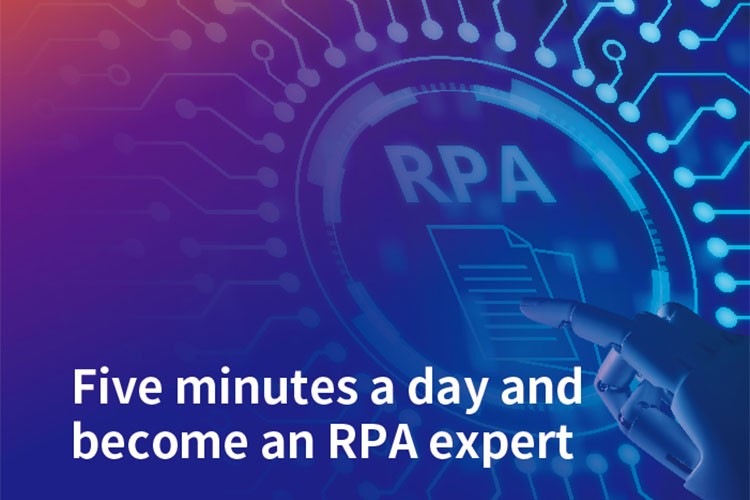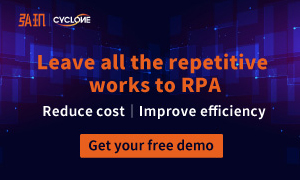What is Hyperautomation?
The term "hyperautomation" was first mentioned in the “Gartner Top Ten Strategic Technology Trends for 2020" report released by Gartner, Inc. in October 2019. The first of these strategic technology trends was hyperautomation (https://www.gartner.com/smarterwithgartner/gartner-top-10-strategic-technology-trends-for-2020/). The following year, Gartner once again referred to the concept of hyperautomation in its "Top Ten Strategic Technology Trends for 2021" report released in October 2020 (https://www.gartner.com/smarterwithgartner/gartner-top-strategic-technology-trends-for-2021/). Gartner noted that the outbreak of COVID-19 (i.e. the novel coronavirus) has made hyperautomation the focus of numerous global organizations and played an important role in achieving en-masse telecommuting and maintaining business continuity under the conditions of the pandemic. In addition to these points, hyperautomation is also the key to maximizing digital operations and operational flexibility.
"Traditional automation" refers to the use of technology to make tasks that previously required manual operation and make them no longer as fully reliant on manual human labor. By contrast, "hyperautomation" is defined by comprehensive upgrades in the degree of task automation, and applies advanced technologies such as Artificial Intelligence and Machine Learning to uplift the automation process (not only the task itself) to a more influential degree than traditional automation. Hyperautomation combines artificial intelligence, machine learning, software toolkits, and automation tools, but the “hyper” part of the process is not just derived from the breadth and power of the tools and platforms enabling it, but also the transformed steps of the automation process themselves, including those of discovery, analysis, design, automation, monitoring, intelligent analysis, etc.
What Does Hyperautomation Consist of?
RPA and iBPMS are key components of hyperautomation. Hyper automation requires appropriate tools and technologies to meet the challenges of the present day. The main focuses of hyperautomation are the understanding of the scope of the automation to be performed, the relationship between the specific business and the proposed automation process, and the possibilities of combination and coordination among them.
• Robotic Process Automation (RPA): This is the automation of systematic, repetitive, and dull activities, and in digital services this is mainly realized through screen recording, scripts and simulation. RPA is easy to deploy, non-intrusive in its activities, easy to use, and simple to maintain.
• Intelligent Business Process Management Systems (iBPMS) : Intelligent Business Process Management is a comprehensive system that integrates coordinators, devices, and businesses. The working mechanisms of an iBPMS rely on processes and rules to help users manage work tasks in a thoroughly systematic way. Usually, integration with external systems is realized through a powerful API. Beyond automating and streamlining work processes, powerful decision-making functions of iBPMS can simplify the working environment and provide natural integration nodes for advanced analysis and machine learning.
iBPMS software supports the entire processes of business and decision-making, including those of discovery, analysis, design, implementation, execution, monitoring, and continuous optimization. These two systems are mutually complementary, and more and more organizations are starting to use them in combination.
iBPMS can quickly sort out even very complex workflows, especially in the context of digital work processes, and can coordinate personnel as well as organize business processes. This is of great help to organizations who wish to automate business processes via RPA.
As organizations' needs for RPA robots change, smart technologies such as machine learning and NLP have successfully expanded the scope of hyperautomation. Various forms of AI technologies, such as machine learning (ML), natural language processing (NLP), and optical character recognition (OCR) have rapidly expanded the scope of hyper automation, and have helped employees to increase their ability to process unstructured data, such as by enabling the reading of text from documents and by extracting data from images.
What Value does Hyperautomation Bring to Enterprises?
Gartner predicts that, by 2024, the operating costs of enterprises will be reduced by 30% through a combination of hyperautomation technology and redesigned operating processes. This process may gradually accelerate as the COVID-19 epidemic subsides. Hyperautomation offers, at the very least, the following value for enterprises:
1. Economic Value
Enterprises can reduce labor costs, improve operational efficiency, improve production efficiency, greatly reduce costs, and significantly increase efficiency with the help of powerful hyperautomation solutions and their functions. For example, the intelligent automation of business processes and workflows can effectively reduce the time and resources required to complete tasks, and reduce the number of errors committed in their completion.
2. Operational Value
Hyperautomation inevitably involves the restructuring of an enterprise’s organizational structure, especially in terms of integrating a digital workforce. These changes help enterprises to create a more flexible and responsive organization that adapts to changing market environments more quickly. This improvement of productivity and the increased attention that workers can allocate to high-value tasks give enterprises a competitive advantage. Better compliance and transparency enable enterprises to quickly respond to any potential problems.
3. Capacity Value
The human and system-centric nature of hyperautomation means that automation is no longer solely reliant on IT and computer tech. A business fully empowered by hyper automation can more clearly understand the direction and scale development of their business operations. They can also better predict the development potential of their business through data, and can build business capability and more rapidly adjust the direction of their business via data-based means. Thus, a business can have its capacity for adaptation and transformation undergo overall improvement via hyperautomation.
About Cyclone
Forrester Wave ™ is a technology marketplace report released by Forrester, widely considered an authoritative international research institution. In the Forrester report "Robotic Process Automation, Q1 2021", Cyclone Robotics (the only RPA manufacturer in China) was been rated as an "Strong Performer" in the global RPA market, ranked with top international RPA companies Uipath, BluePrism, and AutomationAnywhere.
As one of the world's top RPA manufacturers, Cyclone provides end-to-end hyper automation solutions for the smart digital transformation of enterprises all over the world. From the discovery of requirement, to the design of processes, to process execution, to process management, and finally to the empowerment of CoE; customers in various fields including finance, government administration, energy, manufacturing, medicine and healthcare, are endowed with the capability of full business automation.
For a quick understanding of RPA, please go to RPA at a Glance.
For more information about digital transformation, please click here.
iBPMS at a glance: click iBPMS.





